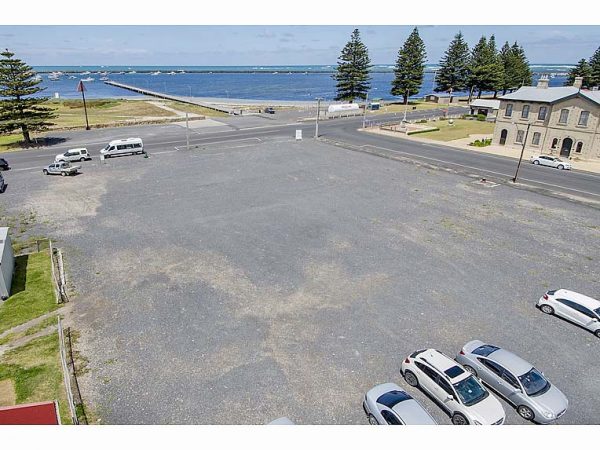

A FRESH report into groundwater contamination at Port MacDonnell’s former boatyard shows potentially harmful levels of arsenic are still present at the prominent seaside site.
But the new probe reveals arsenic levels are lower in each testing well compared with 2013 results, apart from one well near the location of the former fuel tanks.
The highest level of the toxic substance was found in the western portion of the site.
Council commissioned a new probe into contamination levels of the site given frustrations among elected member over its appearance and lack of development.
The site was listed for sale in November 2015 in a move to attract private investment to the landmark site.
Despite a marketing campaign by realtors, the site is yet to sell.
According to the report, groundwater direction was likely to be towards the ocean.
“It is recommended that regular ongoing monitoring of the groundwater contamination is undertaken to gain a more accurate assessment of any migration of contaminants, based upon the intended future use of the site and adjacent sites,” the report said.
Following the release of the contamination levels, council will now write to the Environment Protection Authority (EPA) to clarify whether elevated arsenic levels were a regional issue.
Council will also question whether the EPA has further information regarding any regional levels.
According to the new report, total arsenic levels were found to be elevated in all monitoring wells sampled.
These measures were above the water quality guidelines for drinking wells.
But the levels were below relevant water quality guidelines for primary industries, apart from one well on the site.
The site was used for agriculture purposes up to the 1960s.
Verbal evidence also suggests the site could have been used as a sheep dip, which often contained arsenic.
The boatyard was established in the 1960s to store and maintain fishing vessels.
Potential contamination issues for the site resulted from boat maintenance activities, including chemicals used to remove algae from boats, paints, thinners, fuels and oils.
Groundwater beneath the site was found to be impacted with metals, particularly arsenic, cadmium, copper, lead and zinc.
The report was prepared by I&D Contracting.





